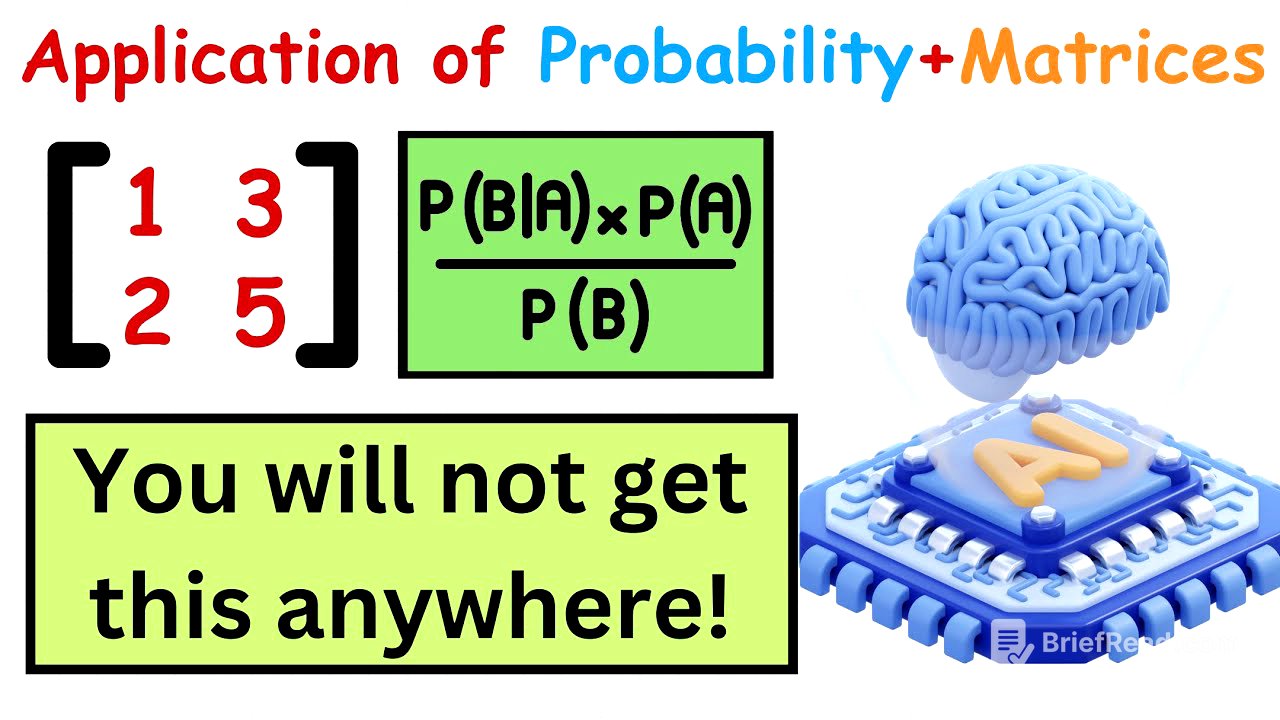TLDR;
This video explains how probability and matrices, specifically Bayes' Theorem, are used by companies like car dealerships, insurance companies, and online marketplaces to predict customer behavior. It simplifies complex theories and advanced calculations to illustrate real-life applications, such as predicting whether a customer will buy a used car based on factors like age, income, and previous car ownership. The video uses examples with bags and balls and a dataset of customer information to explain Bayes' Theorem and its application in predictive modeling.
- Bayes' Theorem helps update beliefs based on new evidence.
- Companies use data to predict customer behavior.
- Naive Bayes classifier predicts outcomes based on probabilities.
Introduction: Real-Life Applications of Math [0:00]
The video addresses the common perception that math is too theoretical by demonstrating its real-life applications. It focuses on how probability and matrices are used by car dealerships, insurance companies, and online marketplaces like eBay. The explanation is simplified to avoid complex theories and advanced calculations, making it easier to understand.
Understanding the Data Set [1:45]
The data set used in the example includes three features for each person: age group (0 for young, 1 for middle-aged, 2 for senior), income level (0 for low, 1 for medium, 2 for high), and previous car owner (0 for no, 1 for yes). The target column, "will buy used car," indicates whether the person bought a used car (1) or not (0). This data, collected for 10 people, is used to predict the likelihood of a new customer buying a used car based on their characteristics.
Bayes' Theorem Explained with Bags and Balls [3:50]
Bayes' Theorem is explained using a scenario with two bags, one with three red balls and one blue ball (Bag A), and the other with one red ball and three blue balls (Bag B). If a red ball is randomly picked, the theorem helps determine the probability that it came from Bag A. The formula for Bayes' Theorem is P(X|Y) = P(Y|X) * P(X) / P(Y), where P(X|Y) is the probability of X given Y, P(Y|X) is the probability of Y given X, P(X) is the probability of X, and P(Y) is the probability of Y. Applying this to the bag example, the probability of the red ball coming from Bag A is calculated to be 75%.
Applying Bayes' Theorem to the Used Car Data Set [10:16]
Bayes' Theorem is applied to the used car data set to predict whether a person will buy a used car based on their age group, income level, and previous car ownership. The goal is to calculate the probability of someone buying a used car (Y=1) or not (Y=0) given their features (X). The formula is adapted, and the prior probabilities P(Y=1) and P(Y=0) are calculated based on the data set.
Calculating Probabilities and Applying Laplace Smoothing [12:27]
The probability of X given Y is calculated by assuming that all features are independent of each other when the outcome is known. Laplace smoothing is used to avoid zero probabilities, adding one to the numerator and a value based on the number of categories to the denominator. For example, the probability of a young person buying a used car is calculated as (3+1) / (7+3) = 4/10.
Final Calculation and Prediction [15:30]
The final probabilities are calculated using Bayes' Theorem, and since the probability for Y=1 is greater than for Y=0, the Naive Bayes classifier predicts that a young person with high income and no previous car ownership is likely to buy a used car. The video concludes by emphasizing that this kind of math is used to make data-driven decisions in real-life businesses.









